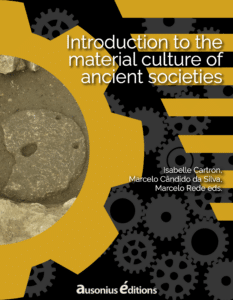UN@ est une plateforme d'édition de livres numériques pour les presses universitaires de Nouvelle-Aquitaine
Type de document : Insert/Encart
The term ‘hoard’ generally refers to a group of objects accumulated on purpose and buried until discovery. Accumulations of coins, sometimes associated with other various forms of money such as ingots, coin blanks or scrap metal, are called coin hoards.
par Pierre Schneider
The history of maritime trade begins under the rule of Ptolemy II (283-246 BC), who initiated Greek seafaring on the Red Sea. Indeed, after Alexander the Great, war elephants had become part of Hellenistic armies.
par Thibaud Canillos
In 2010, a test pit was dug on the eastern edge of the Camp de César oppidum, enabling the excavation and study of a mortar-bonded stone building 14.40 m long and 8 m wide, with a maximum elevation and stratigraphy of around 70 cm.
par Haude Morvan
In medieval Western Europe, religious and lay communities practiced common prayers in dedicated places, with special furniture and objects. For the monks, they were mainly in the choir stalls of the church and the chapter house
par Leandro Ranieri
This is a typical siege scene in the Assyrian palaces. Recurrently, war scenes were placed in the walls of throne rooms (besides some symbolic and protective images).
par Wendy Bougraud
The Inrap archaeological excavation carried out at the end of 2020 in Mortagne-sur-Sèvres (85) led to the discovery of a sepulchral complex of 99 tombs dated between the 6th and 7th centuries AD
par Mathieu Vivas
Penal death in medieval Europe is a vast subject whose chrono-cultural, institutional, and regional subtleties have been highlighted by historians of texts, images, law and procedure, subtleties which sometimes still raise questions.
par Julie Renou
The analysis of an artefact and its contexts is the “reading” of the object, some archeologists even call it “making the remains speak”.
par Gabriel Cordeiro
La Confiserie is an archaeological site located about 20 kilometres from the north of Paris. It was part of a peasant settlement built in the early Carolingian period.
par José Fonseca
The female abbey of Hamage was founded, in the mid-seventh century, by a wealthy aristocratic family.
The site of Ensérune (Hérault, France) is a major site of the Mediterranean Protohistory. At the centre of multiple linguistic and cultural contacts, this oppidum was occupied between the 6th and 1st c. BC by various populations who left several hundred inscriptions, evidence of this diversity.


